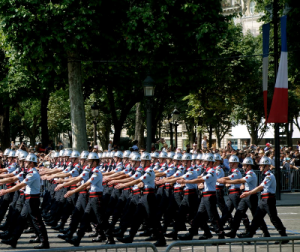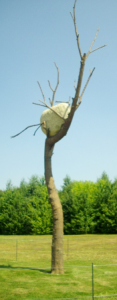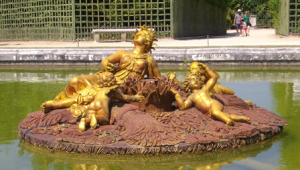Hey Everyone,
First off, if you have noticed that this entry is a little later than usual it is because the residence where I am staying has had technical difficulties with its internet connection. I apologize. Even though the lack of wireless internet seemed like an inconvenience at first, it has given me ample time to reflect on my personal dependence on the internet. It is possible that my need for internet could be based on the fact that I am in a foreign country and rely on the internet to remain in contact with my friends, family, university, and bosses via email and Facebook. In addition, I have also realized just how often I turn to Google to find the answers to my mind’s wonderings, such as what the national language of Norway is or the historical background of a particular building is. While I miss the ability to look up information on a whim, no WIFI has given me the opportunity to turn my curiosity inwards. I have had to time to muse about my motivations for my actions, realizing goals, examining interpersonal relations. The last couple of days without internet have shown me the value in turning off the computer every few days for some self-analysis. That being said, when considering my need to communicate to the rest of the world for a variety of reasons, knowing that I have the possibility of an internet connection is assuring.
Over the past couple of weeks, a pattern has emerged with the students attending the summer language intensive. Each Monday, there is an influx of new students from various countries, usually Brazil and most recently China. In order to know our new peers outside the classroom, every Monday evening we all play a few games of soccer (otherwise known as football in countries outside the US) , together at Cité Université, which is a large group of buildings subsidized by the French government that used to house international students. The grounds contain many large, grassy fields, which provide ample room for soccer. Playing together allows us to socialize and learn each other’s names. In addition, is also reassuring for new students to know a few people in their classes. I like the fact that we all have realized that we are far from home and have all come together to do what we can to ease each other’s anxiety. It is very nice to feel part of a community.

Other students in the language program posing for a quick soccer photo. Taken by Kinoshita Atsushi in July of 2013.
Last Sunday was one of the most important holidays in all of France. This celebration known as La Fête Nationale, or the French National Day, occurs on the 14th of July. This day celebrates the anniversary of the Fête de la Fédération in 1790 which was a huge feast that celebrated the creation of a constitutional monarchy. Coincidentally, this is the same day as the storming of the Bastille. On this day, the oldest military parade of all Europe marches down Champs-Élysées in front of the French President, French officials, and honored guests. The parade contains all of the enlisted people in France’s various armed and unarmed forces which include, but are not limited to, the army, navy, air force, police men, and firemen.

This is a photo of the parade on July 14th meant to honor France’s enlisted citizens. Taken by Kinoshita Atsushi in July of 2013.
This holiday is celebrated with a couple hours long parade of all the various troops in their dress uniforms carrying swords and wearing many flashy decorations with large white gloves, over-head flybys, and in the evening, a huge fireworks show. I have never seen such an extravagant celebration. The entire show lasted about an hour and the fireworks had the same intensity as a grand finale in the United States the whole time. In addition, the entire show was choreographed to music and used multi colored lights, fog machines, and incorporated another building and a display across the Seine. It was incredible. As my friend Bryan, who was born in the South of France, said, “Nobody knows how to celebrate quite like the French.”
This week, I was given a free afternoon without any classes. I used this opportunity to travel to the northern part of Paris to visit Montmartre, a district of Paris, and the Basilica of Sacre Coeur. This very important religious and historical landmark is located on a hill about 129 meters above sea level which makes it the highest point in all of Paris. Construction started in 1875 and the basilica was consecrated in 1919. Inside, pictures were forbidden in order to prevent the degradation of the priceless paintings and artifacts. However, I did manage to get a nice picture of the outside.
Another attraction in Montmartre is the Wall of I Love Yous, or in French Le Mur des Je T’aime. Located in the Place des Abbesses, this work of art uses 612 tiles and contains over 311 declarations of love in over 250 different languages from all over the world. The small bits of red are said to be pieces of a broken heart that the wall tries to reunite. To me, this wall is both happy and sad because while all the pieces of the shattered heart are in the same place, they are forever frozen in place by glaze and tile and so can never be fully put back together.
On Saturday, a few of the students in my class visited the palace and gardens of Versailles. The Château de Versailles, which is on UNESCO World Heritage List, is a palace where three French kings and their families lived. Originally, the site was used for a hunting lodge, but each following generation added more and more to the building, making it grander. Today, it is one of the most famous examples of 18th century French art.
Louis XIV commissioned André Le Nôtre to create the gardens of Versailles in 1661. The size and complexity of these gardens meant that they took over 40 years and thousands of men to complete. Such an undertaking involved moving large amounts of earth using wheelbarrows, transporting hundreds of trees by cart, and the carving countless statues and fountains.
It may seem a little silly, but my favorite part of the entire day was the sculptures on display in the gardens of Versailles. In order to celebrate the 400th anniversary of the birth of André Le Nôtre, the creator of the gardens of Versailles, Italian artist Giuseppe Penone was asked to display various works around the gardens. The series, known as Penone’s Versailles, focuses on using natural materials such as wood, stone, marble, etc. to create harmony between man, nature, and culture.
The first moment I saw one of Penone’s sculptures, I knew that if these pieces of art were the only aspects of Versailles that I saw that entire day, I would feel completely content. For me, I was just in awe of the balance of the sculptures, literally and metaphorically. Some of these works of art contain river stones that are twice the size of a human head balanced some 20 feet off the ground, nestled in the branches of bronze trees. It is amazing that Penone was able to create his trees to match the shape of the stones while still seeming to be natural, as if when the trees had grown, they simply lifted the rocks into the sky. In addition, the pairing of the river smooth rocks and the man-made bronze trees was perfect. It felt like I was looking at a westernized Zen garden, but instead of the trees being planted in rocks, the rocks were a part of the trees. There was a balance of natural and unnatural, organic and inorganic. The majority of Penone’s works were located in a relatively small alcove of the garden known as the Star Grove. The minute I entered it, I would have loved nothing more than to sit on the grass beneath the shadows of the hedges and read a good book.

One of Giuseppe Penone’s bronze tree sculptures. This picture shows how the trees are hollow in the inside. Taken in July of 2013
These two sculptures are created from and blend of Giuseppe Penone’s bronze trees and actual living trees. Taken in July of 2013

This bronze tree in Penone’s Versailles was placed overhead and supported my metal rods and surrounded by living trees. Taken in July of 2013

Most of the trees in Penone’s Versailles found a way to mix organic with inorganic. In this case, a smooth river stone was balanced in a bronze tree. Taken in July of 2013
This last picture was also taken in the gardens of Versailles. It is a bit random, having no real back story. That being said, when I first saw this tree I felt overwhelmingly peaceful. It is my hope that this photo brings you peace and clarity in the upcoming week.
As always, thank you for reading.
-Brenna










